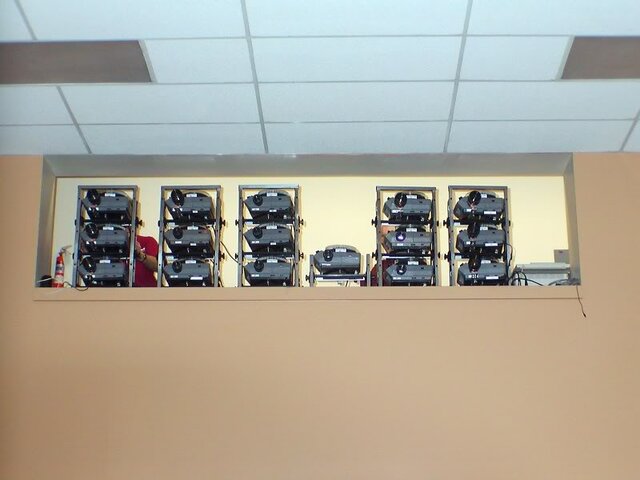One thing to consider, Paul, is nothing will ever replace the human eye, the human response, the human connection to a show or live band. Tech kicks ass, and the above posts are incredibly wise, but I didn't read much about the crap-happens factor, an unforgiving constant in live A/V production. You can have the best software available, but it will never replace the human connection between a board and the
stage. If you have options, you're a lucky man, and you wouldn't be the first to have a broom closet for a booth.
Speaking from an older guy’s perspective, we didn’t have ‘all that stuff’ back then, referring to video screens and go-button, programmed lights, and as it moved in - and as fricking awesome as it was - we found ourselves facing every direction but the
stage. No kidding sometimes the street. As younger guys came into the field, they brought incredible energy, but the human connection began to dwindle and hiccups in shows shot through the roof, not because techs didn’t care, but because it became the norm to accept the limits of software.
Is it cheaper to
build a
catwalk in the ceiling? Is there a hollow pillar towards the back? Any space in the left or right corner? I’ve designed many a
house and always found a way to keep tech in the room. Are 16 more seats worth the cost of a killer show?
We love A/V or we wouldn’t do it, and I don’t think I know any grunts who run A/V for the glamor, though some have lifestyles I’d give my left
nut for, but - the conditions are what they are. You make it work, and you focus on providing a mother-bleeping killer show. The best shows, including those with high-end booths, happen when your tech has the human connection. Sometimes that means an unorthodox booth location. As long as your tech is on board with your
vision, your crew will collectively jump through hoops to make it work.
So there's my old-ass reply.

BIG kudos for what you’re doing. (I'm kinda jealous)



